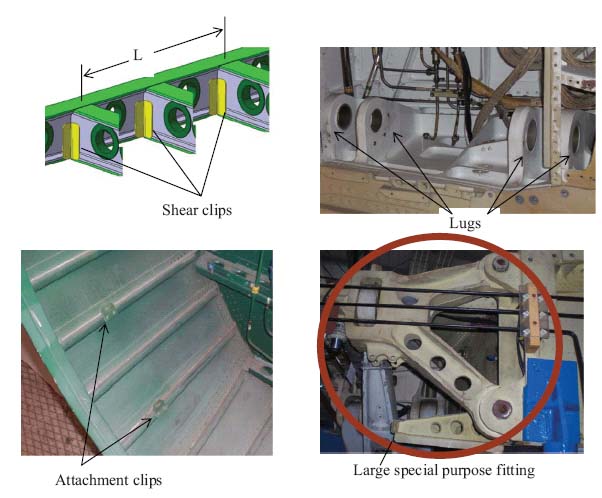11
Composite Fittings
A fitting is a part used to connect at least two other parts and transfer load effectively at the junction. Its main characteristic is that it, usually, transmits loads in multiple directions. Fittings are typically small compared to the parts they connect. Their relatively small size and the multi-directionality of applied loads make the designs of fittings challenging. While there are some standard fittings in terms of shape and purpose such as shear clips, lugs and bathtub fittings, in general, each fitting is a special-purpose part designed for use in one or very few locations. For this reason, the development of generic design and analysis methods can be difficult. Some typical fittings are shown in Figure 11.1.
Figure 11.1 Various types of fittings

11.1 Challenges in Creating Cost- and Weight-Efficient Composite Fittings
The directionality of composite properties may be a disadvantage when it comes to making composite fittings. Usually, one of the loads applied to the fitting is in the out-of-plane direction of a portion of the fitting. In general, the out-of-plane direction has no fibres. Only matrix, which has low strength, is present to carry loads. A typical example is shown, schematically, in Figure 11.2. (Note that this issue is discussed again in Chapter 12, Exercise 12.1.)
Figure 11.2 Tension fitting under out-of-plane load
An out-of-plane ...
Get Design and Analysis of Composite Structures: With Applications to Aerospace Structures, 2nd Edition now with the O’Reilly learning platform.
O’Reilly members experience books, live events, courses curated by job role, and more from O’Reilly and nearly 200 top publishers.

